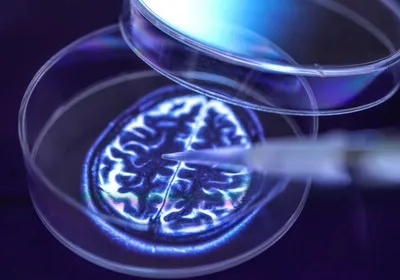ABOVE: Artificial neurons on this silicon chip receive and send electrical signals just as biological neurons do.
UNIVERSITY OF BATH
Synthetic neural circuits made from silicon can accurately mimic the electrical properties of nerve cells, researchers reported yesterday (December 3) in Nature Communications. The research aims to lead to the development of implantable bionic neurons that would help to restore brain circuits that have lost their electrical connection and might help to combat paralysis and possibly diseases, such as Alzheimer’s.
“Any area where you have some degenerative disease, such as Alzheimer’s, or where the neurons stop firing properly because of age, disease, or injury, then in theory you could replace the faulty biocircuit with a synthetic circuit,” study coauthor Alain Nogaret of the University of Bath tells The Guardian.
In the study, Nogaret and colleagues combined mathematics, computation, and chip design to model the firing patterns of a neuron from the ...






















